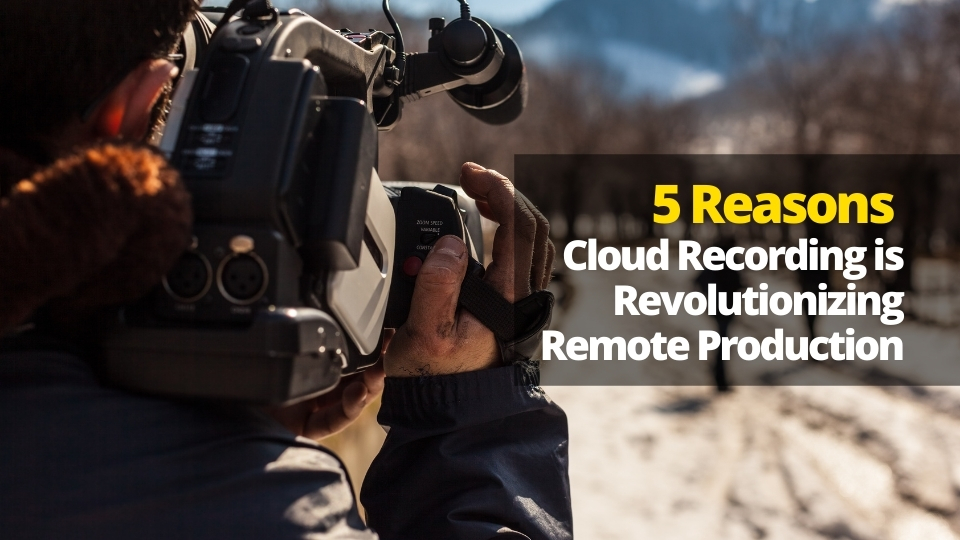5 Reasons Cloud Recording is Revolutionizing Remote Production
For some time, video content providers have been moving more and more tools and processes to the cloud in order to benefit from cost savings and improved flexibility and efficiency. During the global pandemic, this shift accelerated driven by a need to keep content flowing in challenging circumstances. While the need for social distancing forcing smaller on-site teams and drastically changing schedules has made cloud-based video tools crucial, many video providers are experiencing benefits way beyond those immediate necessities.
The ability to record direct to the cloud is one area we think has already begun revolutionizing remote production and that shift will only accelerate further over the coming months. There are many reasons why cloud recording will have a huge impact for broadcasters, way beyond the pandemic, but here are our top 5:
1.Cloud record reduces complexity
If video production teams can record direct to the cloud, then all they need is the cameras and an encoder, everything else can happen in the cloud. Because everything happens in the cloud, it can even be operated from anywhere, meaning broadcasters can dramatically reduce the amount of people who need to be on site, and the expertise required. Even better if the interface is simple to use, making complex processes much easier than ever before.
This is a big change from the historical setup which is generally complex, requiring expertise on site and a whole lot of hardware that needs to be shipped for every remote production.
2. Cloud record gets content out there faster than ever before
Competition has been steadily rising in the media industry, consumers able to access more video content than ever before. This increased competition means that to keep subscribers engaged, video providers need to deliver content faster than ever before. Being able to quickly capture footage in the cloud means that it can be recorded directly into cloud storage, giving the editorial team immediate access to the footage ready to edit, grab clips for social media, or distribute a live stream.
This is compared to traditional methods, where footage needs to be either saved to a hard drive and shipped to a destination or uploaded to a transfer service in the cloud. Both of these options take valuable time
3. Using professional tools in the cloud retains quality
As well as expecting video content to be readily and quickly available, consumers have no patience for any drop in quality. Cloud recording can take those same broadcast-grade tools but simply move them to the cloud. This means that video production teams get the same quality they would with the on-premise hardware while getting the convenience of the cloud.
Up until now ensuring good quality footage has meant the need for lots of expensive hardware. As video producers look to save on hardware and resources, while becoming more cost efficient, they cannot afford to reduce quality in the process. It will not be enough to swap out broadcast-grade hardware for cheaper versions that won’t deliver the same level of quality.
4. Cloud record makes backup simple
Creating backups has of course been an important part of video production for many years. If you are capturing direct to the cloud, not only can the video be stored directly in your cloud storage, it can also be automatically duplicated and saved to a backup storage, giving an extra layer of confidence.
This is much simpler and quicker than the process of creating a duplicate hard drive, for example. It also removes the element of risk as backups are automated.
5. Cloud record makes remote production more cost-effective and flexible
Ultimately remote production needs to become more flexible, able to adapt to changing schedules at a moment’s notice and more cost-effective, to help video providers remain competitive while satisfying consumer demand. Recording direct to the cloud has a massive impact on that, ensuring you only pay for what you use and that you don’t need to invest in lots of expensive hardware.
At Cinedeck, our solutions have been helping capture video all over the world for years. With Cinedeck Capture2Cloud, our customers are able to access all the same features while hosting the Cinedeck instance entirely in the cloud. Find out more – https://cinedeck.com/capture2cloud/

